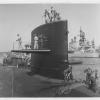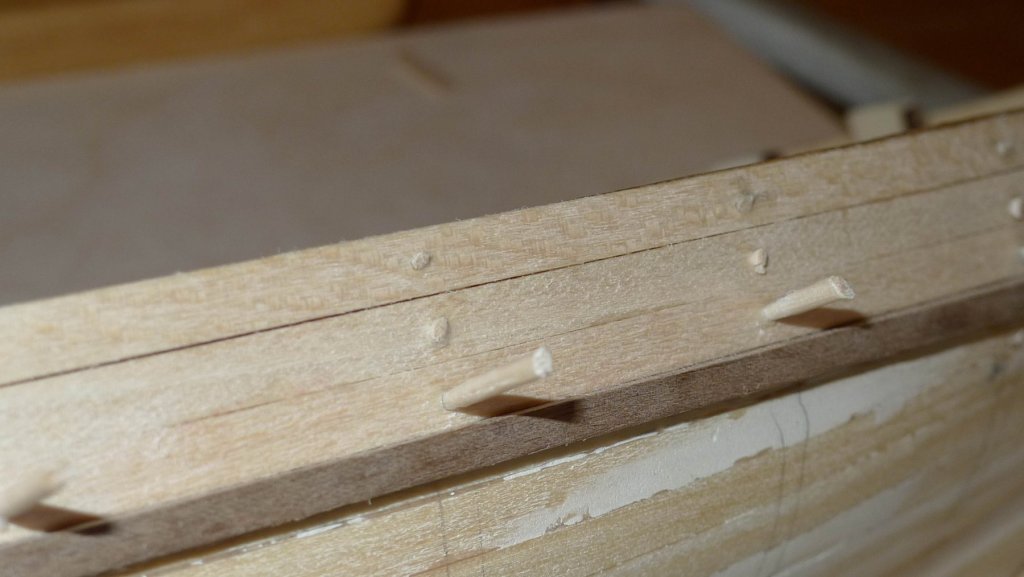-
Posts
53 -
Joined
-
Last visited
Profile Information
-
Gender
Not Telling
-
Location
West Yorkshire. UK.
Recent Profile Visitors
-
 popeye the sailor reacted to a post in a topic:
Bristol Pilot Cutter by michael mott - 1/8 scale (POF)
popeye the sailor reacted to a post in a topic:
Bristol Pilot Cutter by michael mott - 1/8 scale (POF)
-
 Sargon reacted to a post in a topic:
To use full length planks or not. (EDIT BY MOD)
Sargon reacted to a post in a topic:
To use full length planks or not. (EDIT BY MOD)
-
 Tigerdvr reacted to a post in a topic:
To use full length planks or not. (EDIT BY MOD)
Tigerdvr reacted to a post in a topic:
To use full length planks or not. (EDIT BY MOD)
-
 Martin W reacted to a post in a topic:
Halifax by rafine - FINISHED - The Lumberyard - 1:48 - semi-scratch schooner
Martin W reacted to a post in a topic:
Halifax by rafine - FINISHED - The Lumberyard - 1:48 - semi-scratch schooner
-
 mtaylor reacted to a post in a topic:
Halifax by rafine - FINISHED - The Lumberyard - 1:48 - semi-scratch schooner
mtaylor reacted to a post in a topic:
Halifax by rafine - FINISHED - The Lumberyard - 1:48 - semi-scratch schooner
-
 Elijah reacted to a post in a topic:
Halifax by rafine - FINISHED - The Lumberyard - 1:48 - semi-scratch schooner
Elijah reacted to a post in a topic:
Halifax by rafine - FINISHED - The Lumberyard - 1:48 - semi-scratch schooner
-
 popeye the sailor reacted to a post in a topic:
Bristol Pilot Cutter by michael mott - 1/8 scale (POF)
popeye the sailor reacted to a post in a topic:
Bristol Pilot Cutter by michael mott - 1/8 scale (POF)
-
 Canute reacted to a post in a topic:
Halifax by rafine - FINISHED - The Lumberyard - 1:48 - semi-scratch schooner
Canute reacted to a post in a topic:
Halifax by rafine - FINISHED - The Lumberyard - 1:48 - semi-scratch schooner
-
Fantastic craftsmanship Bob Best wishes Don
- 682 replies
-
- halifax
- lumberyard
-
(and 1 more)
Tagged with:
-
 Archi reacted to a post in a topic:
Fantastic finish on this model. Any ideas on how its done?
Archi reacted to a post in a topic:
Fantastic finish on this model. Any ideas on how its done?
-
This is the model in the Smithsonian that I mentioned in my earlier post. You are right I suspect about the holes in the gun port covers and the idea about the scuppers is an interesting one. I will consider that when I come to decking Best wishes everyone Don
-
Hi Juhu Thanks for this: v. interesting Could you tell me what publication this is please I note that the current replica has scuppers that are circular holes and look quite out of place Best wishes to one and all Don
-
Hi Juhu Thanks for the heads up about the lids - I've not seen that. Any Ideas how they might have been handled - y'know, ropes 'n' stuff?
-
Hi Folks Not much progress over recent weeks due to stroke, end of year assessments, and holidays. However, thinking ahead - and excuse me if I'm simply being thick - the model plans don't appear to have any scuppers. Would this function have been performed by the gun ports? Also, the plans don't show any gun port covers whereas the Smithsonian model does. Once the exterior planking is finished these issues will start to come up. Does anyone have any pearls of wisdom to impart on these issues? Best wishes to you all Don
-
 Salty Sea Dog reacted to a post in a topic:
Endeavour 1934 by Julie Mo - Amati - Scale 1:35 - America's Cup UK J-Class Challenger
Salty Sea Dog reacted to a post in a topic:
Endeavour 1934 by Julie Mo - Amati - Scale 1:35 - America's Cup UK J-Class Challenger
-
 Rat-Fink-A-Booboo reacted to a post in a topic:
Endeavour 1934 by Julie Mo - Amati - Scale 1:35 - America's Cup UK J-Class Challenger
Rat-Fink-A-Booboo reacted to a post in a topic:
Endeavour 1934 by Julie Mo - Amati - Scale 1:35 - America's Cup UK J-Class Challenger
-
 Rat-Fink-A-Booboo reacted to a post in a topic:
Endeavour 1934 by Julie Mo - Amati - Scale 1:35 - America's Cup UK J-Class Challenger
Rat-Fink-A-Booboo reacted to a post in a topic:
Endeavour 1934 by Julie Mo - Amati - Scale 1:35 - America's Cup UK J-Class Challenger
-
Hi folks Just looked in on this. For what it's worth, the approach I have taken to this issue is to soften a plank of full length and pin it in place. I let this dry overnight. Then I take it off and cut the pre-bent plank into planks of around 30 scale feet (in the early 19th century on the US east coast they were cutting planks up to 40 ft - this will differ in different locations and different times). To cut the planks I use some little nippers which give the plank butts a very slight shamfer. Clearly when the pieces are butted together they fit perfectly. Hope this is of interest. Best wishes all Don
-
Hi Folks, Just thought I'd pop this picture on the forum. I'm applying the outer planking and can't get the clamps to the new planks as they're bent and glued, so I'm having to pin them as I go. This, of course, leaves holes. I think, ordinarily this shouldn't pose a problem, particularly if, like Ben Lankford in Building First Rate Model Ships From Kits, you're going to fill and sand umpteen times. However, I want to retain the grainy texture so I want to minimize the use of filler. My solution is to fill the holes with a spile cut from a cocktail stick, apply a tiny amount of PVA and tap in using a large half round file. When the glue's set you can nip them off close and when it comes to sanding they can be made flush. I'm painting the hull so the difference in wood won't be visible. Best wishes to you all Don
-
 Rat-Fink-A-Booboo reacted to a post in a topic:
HMS SUSSEX 1693 by 8sillones
Rat-Fink-A-Booboo reacted to a post in a topic:
HMS SUSSEX 1693 by 8sillones
-
 Rat-Fink-A-Booboo reacted to a post in a topic:
Endeavour 1934 by Julie Mo - Amati - Scale 1:35 - America's Cup UK J-Class Challenger
Rat-Fink-A-Booboo reacted to a post in a topic:
Endeavour 1934 by Julie Mo - Amati - Scale 1:35 - America's Cup UK J-Class Challenger
-
Thanks Juhu Once saw Pride of Baltimore I in Baltimore Harbour - then she went and sank. Not seen POBII, but when I next travel to the 'states I would love to. Gonna press on with this as it's providing lots of little problems, which, by solving I learn. Also, I think that absolute authenticity is obviously impossible - the level of detail at which you 'stop' is always going to be arbitrary - so I have in mind an appearance that evokes the 'romance' of these vessels rather than the rather sterile (to my mind) appearance on the box. Still, long way to go yet. Best wishes Don
-
 Rat-Fink-A-Booboo reacted to a post in a topic:
Friesland by S.Coleman - Mamoli- FINISHED - Scale 1:75
Rat-Fink-A-Booboo reacted to a post in a topic:
Friesland by S.Coleman - Mamoli- FINISHED - Scale 1:75
-
Hi Andrew Thanks for this - I'd have loved to have seen it. Thanks Juhu I have a picture of this ship as my PC wallpaper currently. I think the biggest issue in terms of it being a replica rather than a mere 'interpretation' is the stern. The 1816 lines show more of a 'lute' stern whereas this ship has more of a counter stern. The model kit seems to hedge it's bets on this issue too, so I removed about 18 scale inches from the transom area so that the rudder now descends almost straight down from the transom board as in the 1816 in Chapelle. According to Chapelle, she should have seven gun ports per side. I think the shallow entry of the bow to the water on the new ship is beautiful, but I don't think its in keeping with the early 19th century. Again, the plans in Chapelle show a steeper, more convex entry into the water. \i think the new ship has been designed to be a bit more friendly, particularly where 'pitch' is concerned - but then, what would I know Did you get a chance to go on board? I'm hugely envious, I love Boston. Wishing all fair winds and a following sea. Don
-
 Rat-Fink-A-Booboo reacted to a post in a topic:
Lynx by Rat-Fink-A-Booboo - Mantua Panart - First wooden model - Building as 1816 Musquidobit
Rat-Fink-A-Booboo reacted to a post in a topic:
Lynx by Rat-Fink-A-Booboo - Mantua Panart - First wooden model - Building as 1816 Musquidobit
-
Thanks Popeye, I'll look into that - sounds interesting. I discovered yesterday that Ben Lankford recommends baswood for the outer planking so I think I'll do a few experiments. Best wishes Don
-
Finished first skin of planks - filled and sanded back. The outer skin will need to be finer! Wishing you all fair winds and a following sea. Don
-
Hi Wefalc Many thanks, as I understand it 'quarters' are the gratings - quartered - of which you speak, so you answer my question precisely. Frankie Many thanks. This is precisely what I wanted to know Best wishes Don
- 10 replies
-
Hi Folks, Can any one cast any light on this question please. I am building Mantua's Lynx, Baltimore Privateer of 1812. The kit plans have the hatches on the deck covered with quarters. In my ignorance, I kind of assumed that these hatches would have water-tight covers - perhaps to go over the quartering - does anyone have any knowledge of this please Wishing you all fair winds and a following sea. Don
- 10 replies
About us
Modelshipworld - Advancing Ship Modeling through Research
SSL Secured
Your security is important for us so this Website is SSL-Secured
NRG Mailing Address
Nautical Research Guild
237 South Lincoln Street
Westmont IL, 60559-1917
Model Ship World ® and the MSW logo are Registered Trademarks, and belong to the Nautical Research Guild (United States Patent and Trademark Office: No. 6,929,264 & No. 6,929,274, registered Dec. 20, 2022)
Helpful Links
About the NRG
If you enjoy building ship models that are historically accurate as well as beautiful, then The Nautical Research Guild (NRG) is just right for you.
The Guild is a non-profit educational organization whose mission is to “Advance Ship Modeling Through Research”. We provide support to our members in their efforts to raise the quality of their model ships.
The Nautical Research Guild has published our world-renowned quarterly magazine, The Nautical Research Journal, since 1955. The pages of the Journal are full of articles by accomplished ship modelers who show you how they create those exquisite details on their models, and by maritime historians who show you the correct details to build. The Journal is available in both print and digital editions. Go to the NRG web site (www.thenrg.org) to download a complimentary digital copy of the Journal. The NRG also publishes plan sets, books and compilations of back issues of the Journal and the former Ships in Scale and Model Ship Builder magazines.





